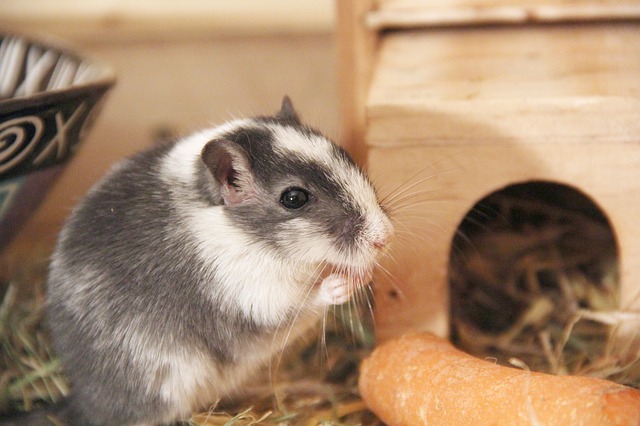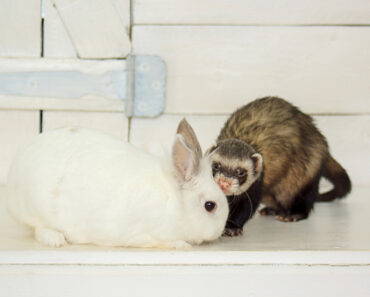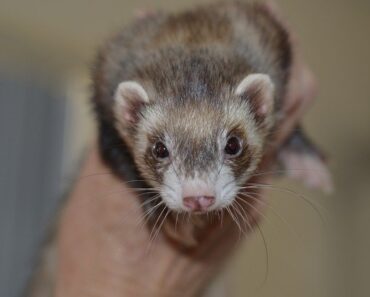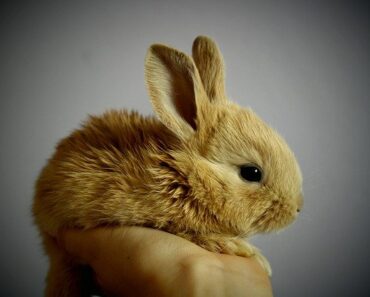Docile and sociable animal, the domestic gerbil is a small rodent curious, full of vitality and very intelligent. Easy to tame and very endearing, it is the ideal pet for young and old.

Where does the gerbil come from?
The gerbil in the wild is native to Mongolia and northern China. There are about a hundred different species, but the best known is the Mongolian gerbil or Mongolian meriones (meriones unguiculatus of its scientific name) which appeared as a small pet in the years 2000.
Following its breeding, this rodent has undergone mutations and it now exists in different colors, unlike the wild species, which is always brown.
The gerbil is part of a subfamily of rodents belonging to the family Muridae. This species should not be confused with gerbils, which have much longer ears, tail and back legs. Moreover, the gerbil moves on two legs.
The character of the gerbil
Of a rather calm and docile nature, the small gerbil is easily handled and caressed, after a little time of adaptation. This rodent is curious, full of vitality and intelligent. Moreover, unlike many other rodents, it does not bite. This makes it an ideal pet for children and teenagers.
Gerbils are very sociable and like to live in groups. They don’t like to be alone, so it’s always nice to have one or more people around. On the other hand, it is preferable to gather the small rodents of the same sex, in order to avoid an overpopulation thereafter.
The gerbil is an animal that rhythms its days and nights with phases of awakening and sleeping, because it is neither diurnal nor nocturnal. It can sleep for 5 hours, then wake up and play. It remains quite active during the day, and likes to have attention.
The physique of the gerbil
Closer to the size of a young hamster than a mouse, the gerbil can measure up to 20 centimeters, with a tail ranging from 16 to 22 centimeters. The tail is not naked, unlike that of the rat, but covered with very soft hair. This small rodent can weigh up to 120 grams. When it is immobile, it likes to lean on its back legs to straighten up and quench its thirst for curiosity.
For the reproduction of the gerbil, it is necessary to count 21 to 28 days of gestation and its life expectancy is from 3 to 5 years. Its sexual maturity is reached then very early. Its originality lies in its coat, which can be of various colors, as well as its eyes. Moreover, they have an angle of vision of 360°, which allows him to see behind her. Its small head, elongated and triangular, as well as its small ears, round and hairy, confer to the gerbil an endearing air.
Finally, the biggest advantage of the gerbil is that it is very clean. It does not give off any annoying odors and pees very little, because it does not hydrate much. Its cage is therefore very easy to maintain.
The gerbil in everyday life
Cousin of the hamster and not very constraining animal, the gerbil is not very expensive. In addition to its adapted and fitted out cage, it is enough simply to envisage him current purchases, such as the litter, the food, and sometimes care or food complements to preserve its health.
Regarding the litter, it is better to use hemp, flax and corn, and to put a small sandbox in place to allow him to roll in it. It is important to install the habitat away from humidity, drafts and temperature variations, as it is relatively fragile.
The gerbil is omnivorous, with a tendency to granivore, so it feeds mainly on seeds. They have a preference for wheat and peanuts, but food sold in the form of pellets are perfect for providing a balanced diet. Very sensitive to changes, it will be necessary to choose new foods for your gerbil by giving it gradually in order to preserve it from digestive problems. You should also know that it is important to give him hay every day to avoid constipation.






